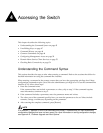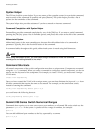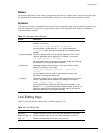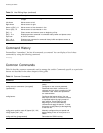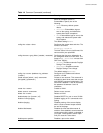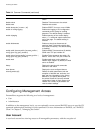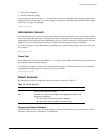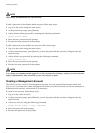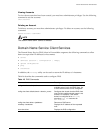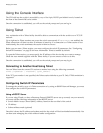
Configuring Management Access
Summit 200 Series Switch Installation and User Guide 51
• User account database.
• SNMP community strings.
A user-level account can use the ping command to test device reachability, and change the password
assigned to the account name. If you have logged on with user capabilities, the command-line prompt
ends with a (>) sign. For example:
Summit200-24:2>
Administrator Account
An administrator-level account can view and change all switch parameters. It can also add and delete
users, and change the password associated with any account name. The administrator can disconnect a
management session that has been established by way of a Telnet connection. If this happens, the user
logged on by way of the Telnet connection is notified that the session has been terminated.
If you have logged on with administrator capabilities, the command-line prompt ends with a (#) sign.
For example:
Summit200-24:18#
Prompt Text
The prompt text is taken from the SNMP sysname setting. The number that follows the colon indicates
the sequential line/command number.
If an asterisk (*) appears in front of the command-line prompt, it indicates that you have outstanding
configuration changes that have not been saved. For example:
*Summit200-24:19#
Default Accounts
By default, the switch is configured with two accounts, as shown in Table 15.
Changing the Default Password
Default accounts do not have passwords assigned to them. Passwords must have a minimum of four
characters and can have a maximum of 12 characters.
Table 15: Default Accounts
Account Name Access Level
admin This user can access and change all manageable parameters. The
admin account cannot be deleted.
user This user can view (but not change) all manageable parameters, with
the following exceptions:
• This user cannot view the user account database.
• This user cannot view the SNMP community strings.





